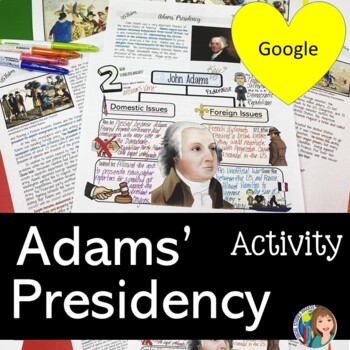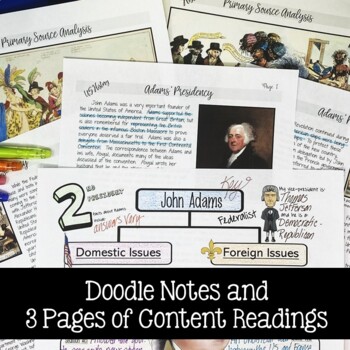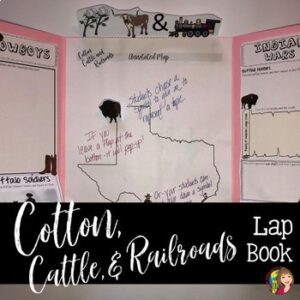Description
What foreign and domestic issues did John Adams confront during his presidency? Allow your students to learn about the presidency of John Adams with political cartoons, readings, and Doodle Notes™. Resource includes Google Slides™ for distance learning.
In this resource you will receive –
–Directions for the activity
–4 pages of political cartoons to analyze, 2 at the beginning of the lesson and 2 at the end as a processing assignment,
–3 pages of informational text on John Adams’ presidency, including the XYZ Affair, Quasi-War, and the Alien and Sedition Acts,
-Doodle Notes™ for the Adams’ presidency
–Google Slides™ for distance learning
-an answer key
⭐Please download the preview to see more information on this resource. ⭐
Doodle notes is a trademarked term used with permission. Please visit doodlenotes.org for more information.
2019 US History TEKS for 8th Grade
(5) History. The student understands the challenges confronted by the government and its leaders in the early years of the republic and the Age of Jackson. The student is expected to:
(A) describe major domestic problems faced by the leaders of the new republic, including maintaining national security, creating a stable economic system, and setting up the court system;
(C) explain the origin and development of American political parties;
(21) Citizenship. The student understands the importance of the expression of different points of view in a constitutional republic. The student is expected to:
(A) identify different points of view of political parties and interest groups on important historical issues;
(B) describe the importance of free speech and press in a constitutional republic; and
(29) Social studies skills. The student applies critical-thinking skills to organize and use information acquired through established research methodologies from a variety of valid sources, including technology. The student is expected to:
(A) differentiate between, locate, and use valid primary and secondary sources such as media and news services, biographies, interviews, and artifacts to acquire information about the United States;
(B) analyze information by applying absolute and relative chronology through sequencing, categorizing, identifying cause-and-effect relationships, comparing, contrasting, finding the main idea, summarizing, making generalizations and predictions, and drawing inferences and conclusions;
(C) organize and interpret information from outlines, reports, databases, and visuals, including graphs, charts, timelines, and maps;
(D) identify bias and points of view created by the historical context surrounding an event;















Reviews
There are no reviews yet.